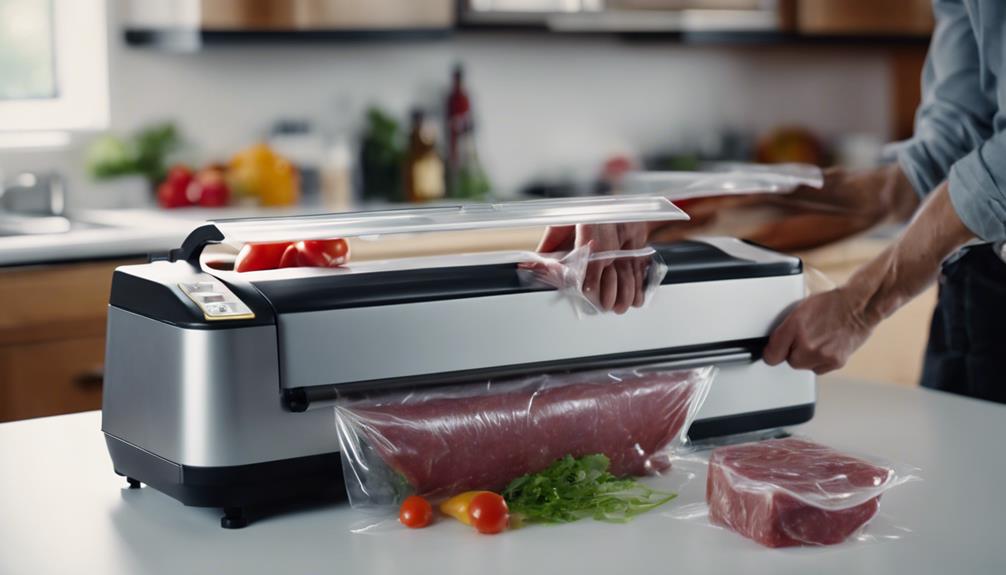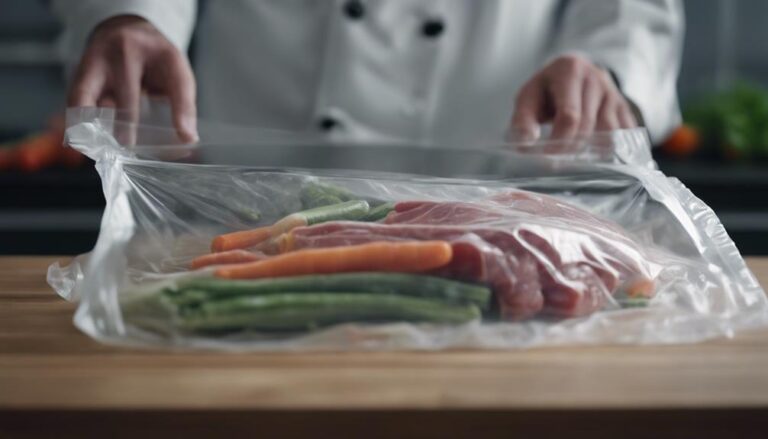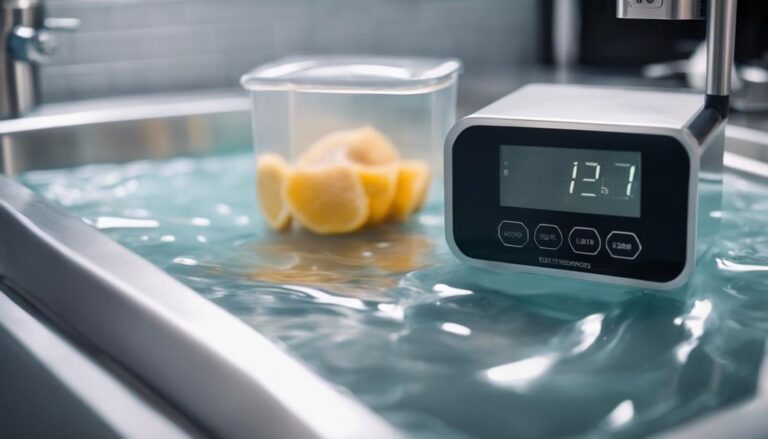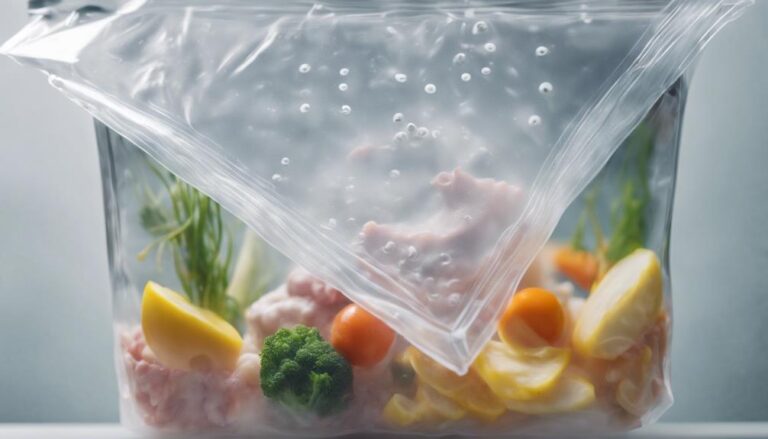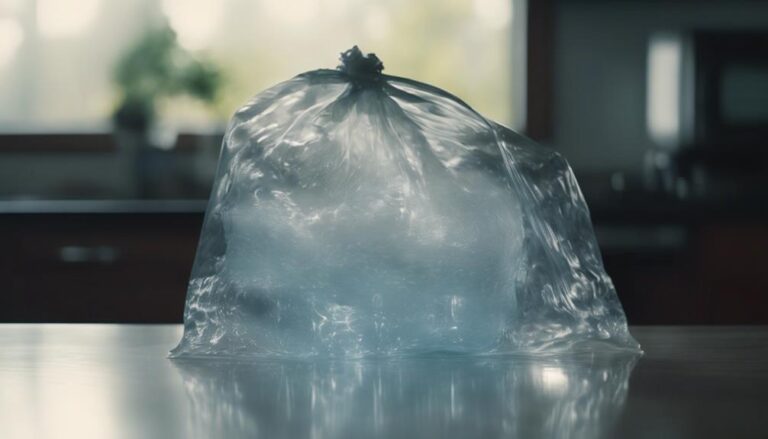How to Vacuum Seal Like a Pro: Tips and Tricks
To vacuum seal like a pro, pick the right bag size for proper sealing. Opt for BPA-free bags and pre-cut options. Fold the bag top by 2 inches for a clean seal. Freeze delicate foods before sealing to maintain shape. Portion out meals before sealing for convenience. Freeze liquids first to avoid leaks, using paper towels for moisture. These tricks will enhance your vacuum sealing skills effortlessly. Master these tips for professional results.
What You Will Learn Here
- Choose slightly larger bags for proper sealing and air removal.
- Master the bag cuffing technique for an airtight seal.
- Freeze delicate foods before sealing to retain shape and taste.
- Seal convenient portions for easy meal prep and freshness.
- Freeze liquids before sealing and use paper towels to absorb moisture.
Choosing the Right Bag Size
When vacuum sealing food items, make sure you select bags that are slightly larger to allow for proper sealing and air removal. Choosing the right bag size is important for maintaining food freshness and safety.
Opt for high-quality, BPA-free bags to guarantee that your food stays fresh for longer periods. Consider using pre-cut bags for added convenience or rolls for custom sizes tailored to your specific needs.
Matching the bag sizes with the type of food item you're sealing is vital to maximize space and reduce waste. Additionally, make certain that the bags are compatible with your vacuum sealer machine to ensure effective sealing and air removal.
Proper Bag Cuffing Technique
To guarantee clean and effective sealing, consider folding the top of vacuum sealing bags by 2 inches before filling them. Bag cuffing is an important step in the vacuum sealing process that guarantees a clean cuff area, free from any food residue that could impact the sealing process. By properly cuffing the bags before filling, you set the stage for a smooth and airtight seal, essential for maintaining food freshness and enabling long-term preservation.
The proper cuffing technique plays a significant role in achieving an airtight seal, which is essential for food preservation. A clean cuff area contributes to the success of the sealing process, preventing any potential leaks that could compromise the quality of your vacuum-sealed food. By paying attention to this simple yet essential step, you can enhance the overall effectiveness of the sealing area and prolong the shelf life of your stored items. Mastering the art of bag cuffing sets you on the path to successful food preservation and long-lasting freshness.
Freezing Delicate Foods Before Sealing
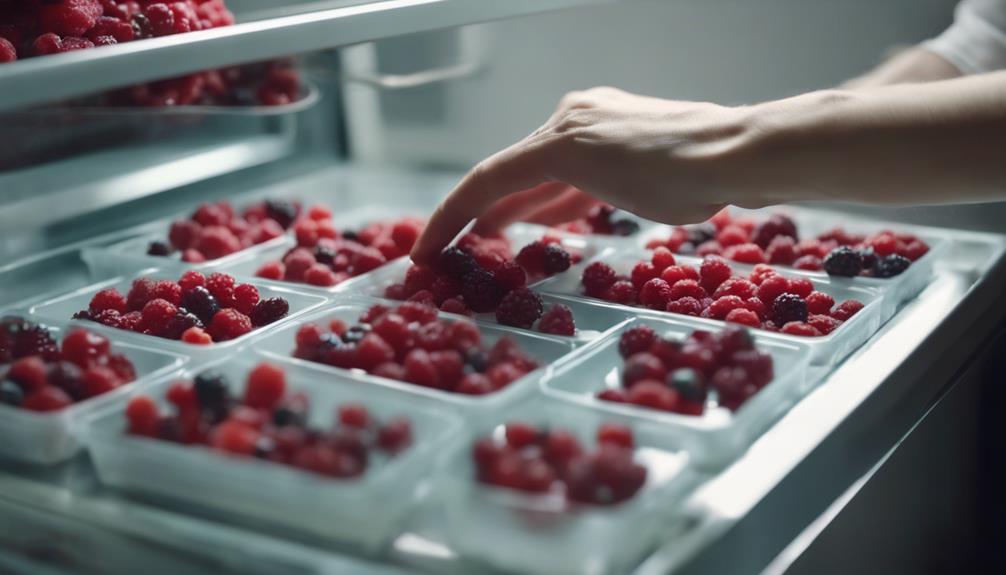
Freeze delicate foods like fish and berries before vacuum sealing to prevent crushing during the sealing process. Delicate foods, such as these, can easily lose their shape or texture if not pre-frozen before vacuum sealing. By pre-freezing these fragile foods, you help maintain their freshness and guarantee they retain their original taste even after being sealed. This pre-freezing technique is essential for preserving the integrity of soft foods, safeguarding their quality for long-term storage.
When delicate foods are vacuum sealed without pre-freezing, the pressure from the sealing process can cause them to become misshapen or crushed. To prevent this, simply place the items in the freezer for a short period before vacuum sealing. This extra step not only protects the delicate foods but also helps them stay fresh and flavorful for an extended period.
Incorporating the practice of pre-freezing delicate foods before sealing is a simple yet effective way to maintain the quality of your stored items, making sure they taste just as delicious when you're ready to enjoy them.
Sealing for Convenient Portions
For optimal meal prep efficiency, consider portioning out meal-sized servings before vacuum sealing. By dividing bulk items into smaller portions, you can minimize waste and guarantee each serving is fresh when you need it. Sealing individual portions of meat, vegetables, or fruits allows for quick and convenient use, saving you time and effort in the kitchen. Additionally, creating custom portion sizes tailored to different recipes and cooking needs can streamline your meal preparation process.
When vacuum sealing snacks or ingredients in single servings, you not only preserve their freshness but also make them easily accessible for when hunger strikes. This method of sealing for portions not only helps in organizing your food items but also contributes to reducing food wastage. Customizing portion sizes according to your consumption patterns can lead to more efficient meal planning and a smoother cooking experience. Embrace the convenience of vacuum sealing for portions to simplify your daily cooking routine.
Freezing Liquids Safely

When preparing to vacuum seal liquids, consider freezing them beforehand to prevent moisture-related leaks at the seal area. Freezing liquids helps control moisture, preventing it from reaching the seal and causing potential leaks.
To further guarantee a tight seal, place folded paper towels inside the bags to absorb any excess moisture from wet items. For sauces and soups, it's best to freeze them first before sealing to avoid spills. Once frozen, seal them carefully to prevent any liquid from escaping during the vacuum sealing process.
To add an extra layer of protection against leaks and spills, heat strip each end of the sealed bags. This additional step can help fortify the seal and prevent any potential leaks. Additionally, dividing liquids into smaller portions before vacuum sealing not only makes them easier to store but also reduces the risk of spills when thawing or using them later on.
Frequently Asked Questions
How Do I Get the Most Out of My Vacuum Sealer?
To get the most out of your vacuum sealer, maximize food preservation, sealing benefits, and long-term storage. Try vacuum sealing hacks like proper air removal, sealing techniques, and tricks for best results. Follow vacuum sealer tips and secrets for best outcomes.
Is It Better to Vacuum Seal Moist or Dry?
When vacuum sealing, it's advantageous to take into account moisture levels. Sealing moist foods prevents freezer burn and extends freshness. To avoid leaks, freeze liquids first or use smaller bags. For dry items, vacuum sealing maintains freshness longer.
How Do You Vacuum Seal Without Crushing?
To vacuum seal without crushing delicate items, remember to prevent crushing by partially freezing foods. Use proper technique with flat placement in bags, adjust settings for air removal, and maintain pressure. This helps avoid damage, seal safely, and protect contents while preserving freshness.
What Pressure Do You Vacuum Seal?
When vacuum sealing, adjust pressure settings for different foods. Maintain optimal vacuum levels to preserve texture. Guarantee proper air removal in vacuum seal bags or jars. Seal meats, fruits, vegetables, and liquids carefully. Safeguard delicate items from crushing.
Conclusion
Now that you know these tips and tricks, you can vacuum seal like a pro!
Remember to choose the right bag size, cuff the bags properly, freeze delicate foods before sealing, seal for convenient portions, and freeze liquids safely.
With these techniques, you can preserve your food effectively and efficiently.
Happy vacuum sealing!
